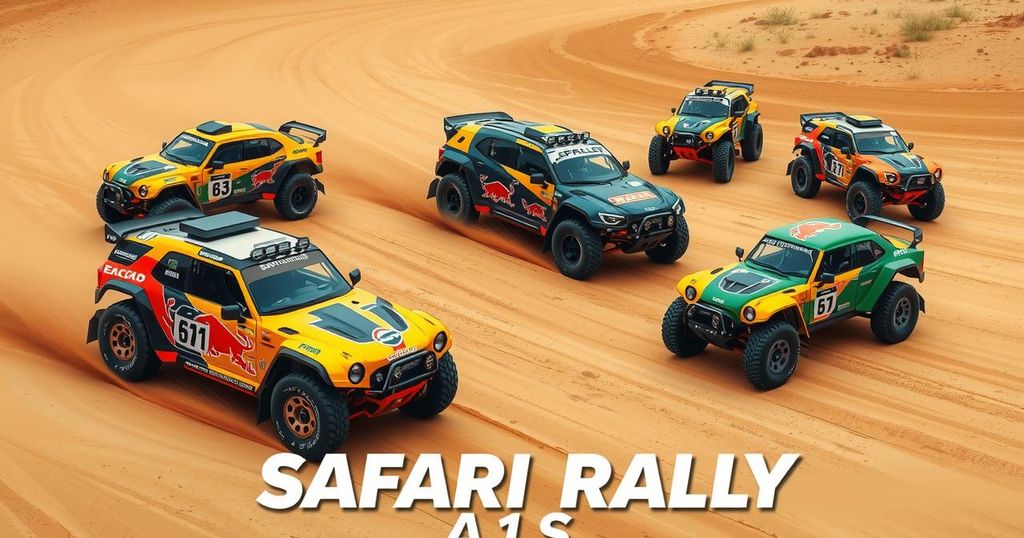Understanding the Unique Modifications of WRC Cars for Safari Rally Kenya

The Safari Rally Kenya features distinct car modifications necessary for the challenging conditions of the event, including snorkels and elevated suspensions. The rally begins today, with 39 drivers competing across 384 kilometers. Major car brands participating include Toyota, Hyundai, and Ford, with the event attracting significant global attention.
The upcoming Safari Rally Kenya is distinctive on the World Rally Championship (WRC) calendar due to significant visual and mechanical alterations made to the cars. These changes are essential for performance, enabling the vehicles to endure the extreme conditions of one of the most challenging rally events globally, characterized by its tough terrain and unpredictable weather.
The rally will officially commence today, March 20, with a flag-off by President William Ruto, followed by the Super Special Stage in Kasarani. Competitors will then proceed to Naivasha in Nakuru County, where they will tackle a total of 384 competitive kilometers. This distance marks the longest rally of the season, involving rigorous routes, deep water crossings, and fast-paced sections.
Among the critical modifications made to the vehicles is the addition of a snorkel, a raised air intake. This component plays a vital role in ensuring that the engine can operate safely during water crossings, a common challenge presented by the rally’s diverse and often harsh conditions.
Additionally, the suspension system of the cars is notably taller and sturdier. This adjustment is crucial to navigate the relentless terrain, which features significant undulations, sharp ruts, and large rocks, all of which pose threats that could effectively halt a rally.
Given that the Safari Rally is held at high altitude around Naivasha, teams must recalibrate engine maps to account for reduced engine performance due to the thinner air. Every ounce of power counts, especially as drivers aim to maintain speed across the scenic African landscape.
This year, the motorsport event has attracted 39 competitors from diverse countries, with expectations for over 85 million viewers worldwide and approximately 100,000 fans attending the rally in person.
The race will prominently feature vehicles from brands such as Toyota, Hyundai, and Ford. Hyundai motorsport aims to end Toyota’s winning streak in the Safari Rally since the latter’s return to WRC in 2021. Notable drivers include Thierry Neuville, Ott Tänak, and Adrien Fourmaux, leading Hyundai’s challenge with their i20 N Rally1 cars.
In the M-Sport Ford lineup, drivers Grégoire Munster, Josh McErlean, and gentleman driver Jourdan Serderidis will compete in Ford’s Puma Rally1 vehicles. The WRC2 category will also witness reigning champion Oliver Solberg in a Toyota GR Yaris Rally2, alongside Kajetan Kajetanowicz, who is making his debut in a similar model.
In conclusion, the Safari Rally Kenya distinguishes itself within the WRC calendar by necessitating substantial modifications to the cars due to its challenging terrain and climate. Key enhancements, such as snorkels and elevated suspension, are vital for vehicle performance. This year’s event promises to be exciting with a diverse array of participants and significant global viewership, as leading brands compete fiercely for dominance in this rigorous rally.
Original Source: www.the-star.co.ke




